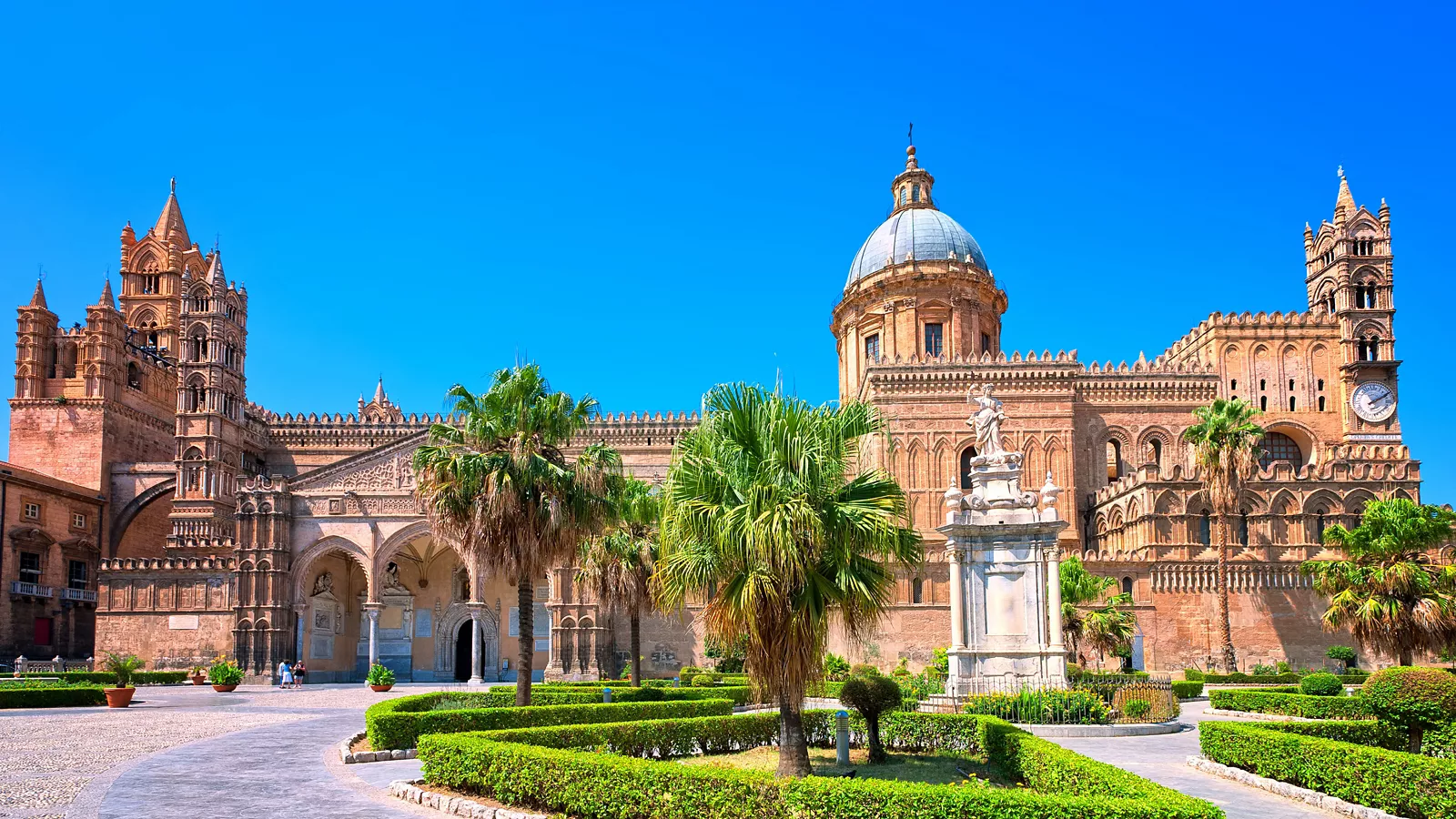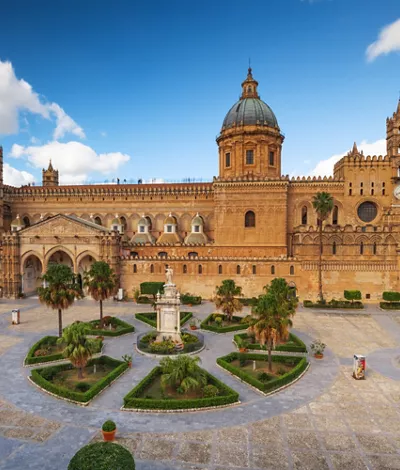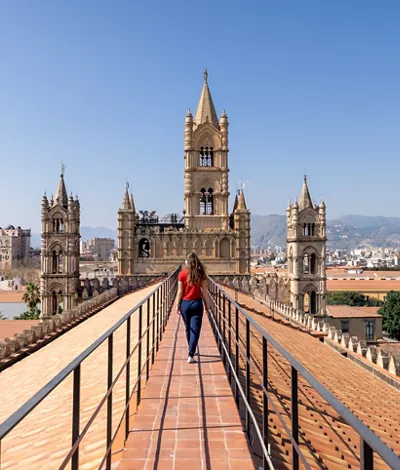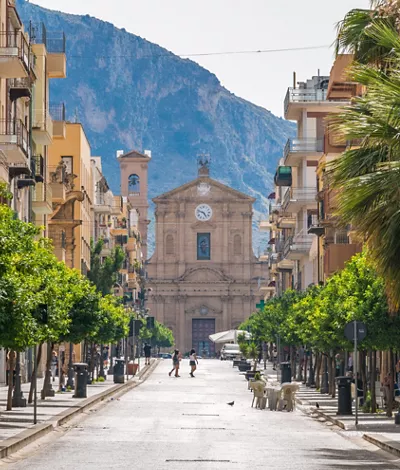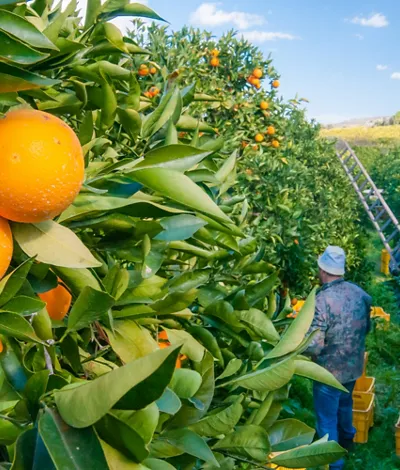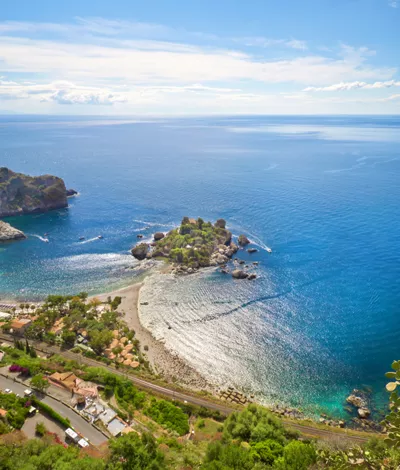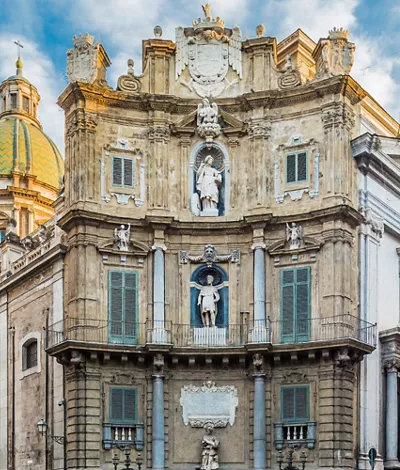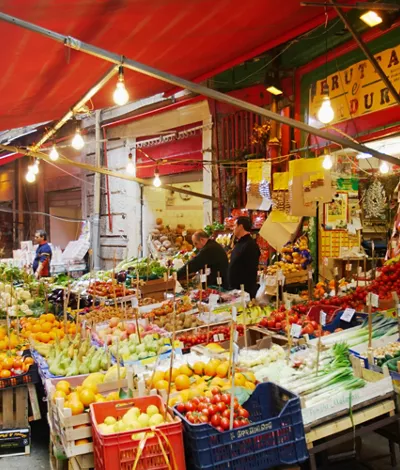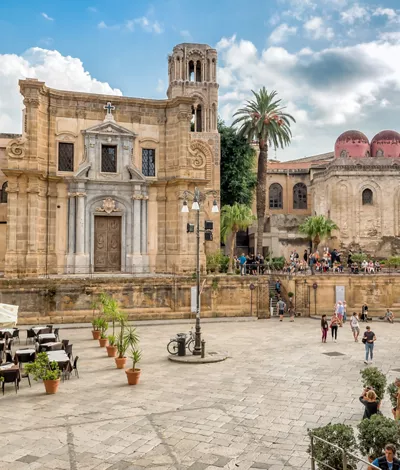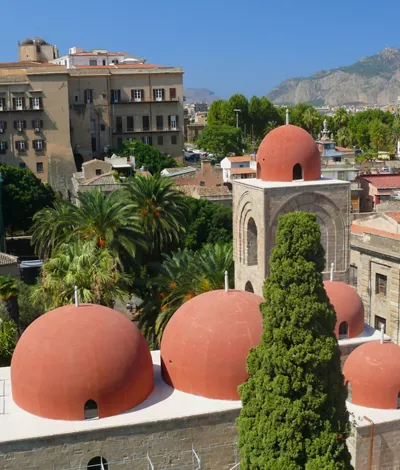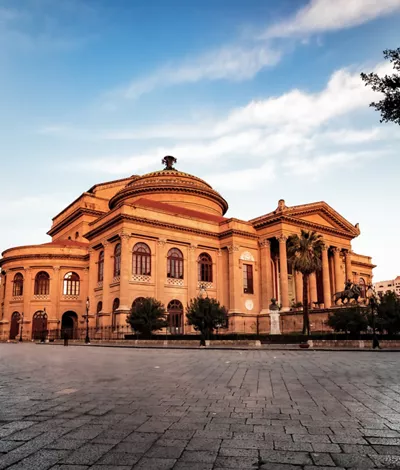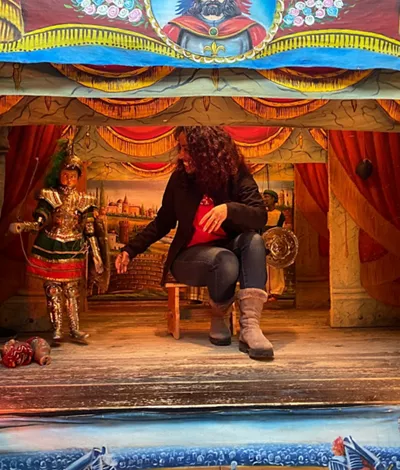Sicilian capital and crossroads of cultures and traditions, Palermo will cause you to fall in love with its exhilarating colours, fragrances and flavours
Palermo is a city teeming with churches, monuments and priceless works of art, animated by noisy working-class neighbourhoods adjoining sumptuous aristocratic buildings. Icing on the cake is the pleasant climate in all seasons, a breathtaking ocean view and a compelling culinary tradition.
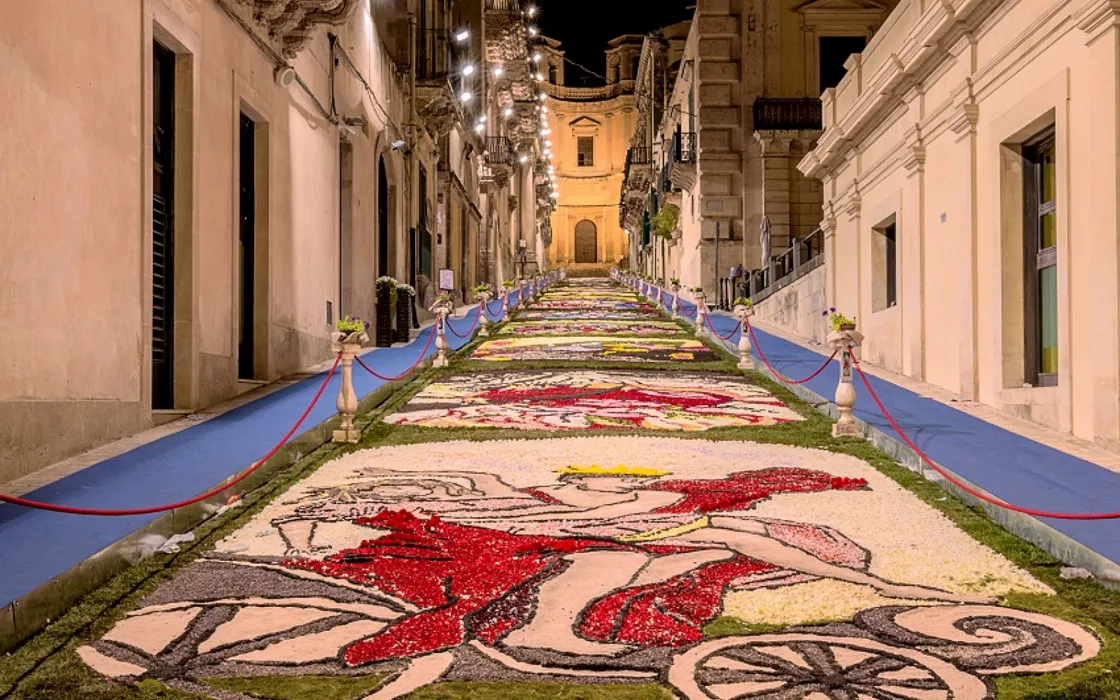


A precious jewel of the south with rich cultural heritage
Of all the dominations over the centuries, Palermo retains character and contradictions, which it proudly displays by claiming its uniqueness in artistic and architectural heritage, society, and richness of its extraordinary food and wine tradition exported all over the world. It is in a fusion of cultures that the heart of the city resides.
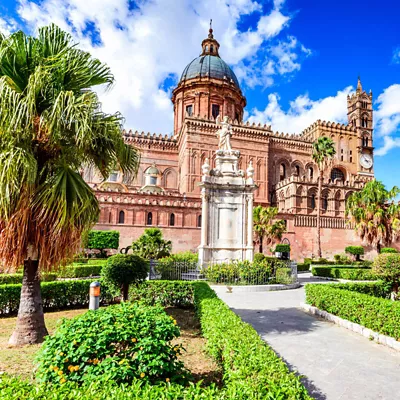
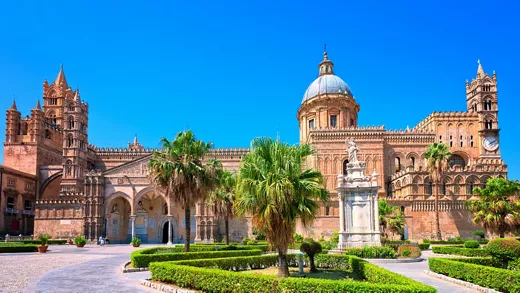
Palermo
Sicilian capital and crossroads of cultures and traditions, Palermo will cause you to fall in love with its exhilarating colours, fragrances and flavours. Palermo is a city teeming with churches, monuments and priceless works of art, animated by noisy working-class neighbourhoods adjoining sumptuous aristocratic buildings. Icing on the cake is the pleasant climate in all seasons, a breathtaking ocean view and a compelling culinary tradition.
Discover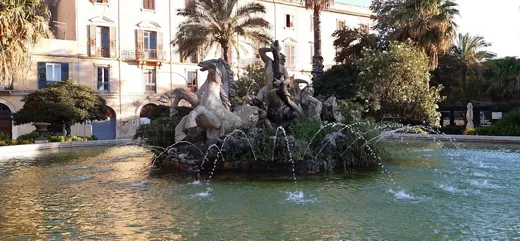
Trapani
History, nature, art and islands Pristine nature overhanging the sea and hidden coves, art, culture and tradition: Trapani, the western tip of Sicily, is home to this and more. Nicknamed the “City of a Hundred Churches”, we recommend exploring the streets of the old town, stopping to admire the Tower of Ligny and walking along the Mura di Tramontana, the ancient defensive perimeter leading from Piazza Mercato del Pesce to the Bastione Conca. Don’t miss the spectacle of the salt pans, which turn a deep pink when bathed by the sunset. From Trapani, you can take the cable car to the medieval town of Erice, to admire breath-taking views of the city and surrounding area. Along the coast from north to south are the splendid gulf of Castellammare, the fishing village of Scopello and the Caribbean-like beaches of San Vito Lo Capo, which hosts the Cous Cous Festival every September. Nearby, you can explore the pristine nature of the Zingaro Nature Reserve. Mazara del Vallo is home to the famous Dancing Satyr, and from the Stagnone you can take a boat to the island of Mozia, once home to an ancient Phoenician colony. From Trapani you can visit the Egadi Islands, to spend a day in the coves of Favignana. If you love diving, Marettimo is the place for you. For ancient ruins, check out the temples of Segesta and Selinunte. Meanwhile, in the Mangiapane Cave you can discover the ancient village built into the rock.
Discover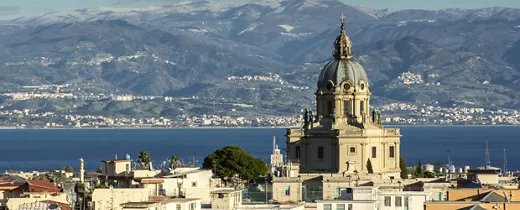
Messina
The majestic gateway to Sicily A renowned cultural and commercial centre, Messina is the gateway for travellers to Sicily. We recommend visiting the Norman Cathedral, which houses Italy’s second largest organ and the world’s largest, most complex mechanical astronomical clock. Also worth exploring is the seat of the university, founded in 1548 by St Ignatius of Loyola. The province is home to the beautiful Taormina, famous for its picturesque pedestrian streets, archaeological sites and breath-taking views. The natural terrace on Monte Tauro, 206 metres above sea level, offers unique views of the Mediterranean. The village is home to the Greek Theatre, the region’s second largest theatre. Be sure to treat yourself to a few hours relaxing on the beach overlooking Isola Bella, a stunning islet that has become the symbol of Taormina. While in the area, don’t miss a visit to the villages of Novara di Sicilia, Tindari and Milazzo. The latter is famous for the Pool of Venus, a paradise for anyone who loves snorkelling, from which you can also reach Lipari, Vulcano or Stromboli. You can discover the charm and power of nature by plunging into the icy waters of the Alcantara Gorges. You can walk among the lava walls, and go rafting, climbing and trekking in the geological park surrounding the gorges.
Discover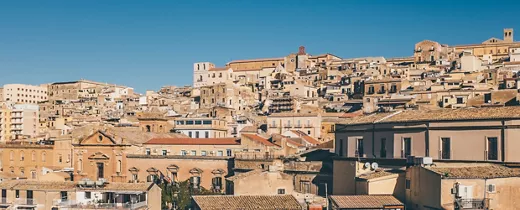
Agrigento
"There lingers a wind that I recall afire / within the manes of slanted horses / that marks and gnaws the sandstone and the heart / of the gloomy telamons, lying / above the grass". The verses of Salvatore Quasimodo introduce visitors to the awe-inspiring Valley of the Temples, where the effect of the large telamons that supported the Temple of Olympian Zeus is anything but lugubrious. One thing's for certain, the archaeological park of ancient Akagras (the Ancient Greek word for Agrigento) - which the Greek poet Pindaro called “the most beautiful city” -and which is now a UNESCO World Heritage Sitewon't leave you indifferent. The magnificent Doric temples date back to the 5th century BC, when the city was at its peak. Excavations have also brought to light other parts of the ancient city such as public buildings, water systems, necropolises and fortifications, up to the archaeological and monumental ruins dating from the early Christian era. In the park, there are also nature trails through the Mediterranean scrub, amid agaves and prickly pear trees and acres of olive groves, vinyeards and almond trees. Among the many places of worship dedicated to the gods of Olympus, what else but a Greek myth could explain the luxuriant early flowering of the almond trees. Every year, the people of Agrigento celebrate the arrival of spring with the Almond Blossom Festival, remembering the mythical but ill-fated love story between a princess and a warrior. The medieval and modern city developed around the 9th century AD, on the Girgenti hill. Even beyond the archaeological park, Agrigento still retains many traces of its splendid history , such as the medievalcentre with its winding maze of streets typical of Arab cities and the plethora of churches and buildings constructed in different styles through the centuries. Agrigento has been proclaimed the Italian Capital of Culture 2025, together with Lampedusa and the local towns.
Discover
Caltanissetta
The essence of Sicily among the sea, castles and traces of a rich history Caltanissetta and its province are a destination to be discovered all year round, thanks to a pleasant climate even in the winter months. Discover the welcoming beaches of the Gela coastline and the green hills of the surrounding hinterland, with their archaeological remains from centuries of history. The entire area is dotted with small villages to be discovered at leisure, such as Borgo Santa Rita and Delia, during a camper van or car holiday. Caltanissetta itself has a lot to offer its visitors, from the imposing Baroque cathedral of Santa Maria la Nova to the colourful Church of Sant'Agata overlooking the large Corso Umberto I. Towering over the city are the ruins of Pietrarossa Castle, destroyed in the earthquake that struck the city in 1567. Be sure not to visit the Archaeological Museum to dive into this land's past. Overlooking the sea, the city of Gela is noted for its archaeological sites of great importance, starting with the Mura Timoleontee, for the Biviere Nature Reserve covering more than 300 hectares and for its historic centre full of Liberty-style buildings.
DiscoverEnna
At an altitude of almost 1,000 metres - the highest provincial capital in Italy - Enna has always been an 'urbs inexpugnabilis', and is still a great little town that the Italian Touring Club has described as a 'ring of wonder', an 'up-and-down town', a 'summit suspended over the land', a 'balcony of incredible views'. The austere and enormous fortified system of the castle of Lombardy, created during the Swabian domination, offers a panorama that dominates both the city itself and the other urban pyramid of Calascibetta, perched opposite. A classic journey through the Erei and Iblei mountains from here to the tip of Cape Passero would hardly begin from Enna: it is logistically too far inland for people arriving from the mainland or landing at Catania airport. However, it is worth driving half an hour from Piazza Armerina to convince yourself that Enna has preserved its character as a historical city with a sober medieval tone, together with some marginal Baroque and 18th-century contaminations. Archaeological finds have confirmed the age-old origins of the city, which tradition says was the ancient centre first of the Sicans and then of the Siculians. Today's gastronomic discoveries include maccaruna with meat sauce, lamb or mutton chops, omelettes with vegetables, focaccias stuffed with bacon and tomato, and piacintinu pecorino cheese flavoured with saffron and black peppercorns, and much more.
Discover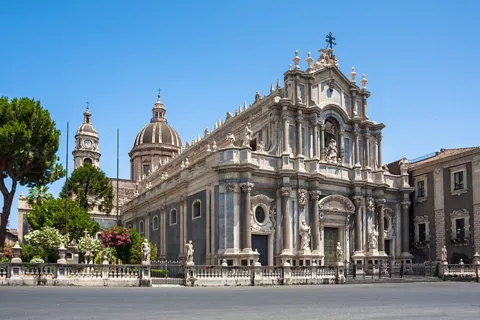
Catania
With its breathtaking sea and unparalleled artistic heritage, Catania is fascinating and captivating. Indulge in the magnetic energy of a city with a long and colourful history, be swept away by its vitality and captivated by its art, architecture, food and wine. A visit to Catania is certain to be an unforgettable experience.
Discover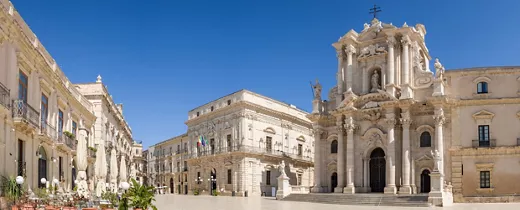
Syracuse
The city of Syracuse is located in one of the most beautiful inlets on the Mediterranean. It is a vital and dynamic city, worthy of its great past, and in 2005 was duly recognised as a UNESCO World Heritage Site. A visit to Syracuse is a journey back in time and to discover the wonderful beauty of the natural environment in which the city is immersed. Syracuse has given rise to great figures of the cultural and artistic history of the Mediterranean and still has a very lively intellectual life. Archaeological evidence confirms human presence on the island of Ortigia as early as the 14th century BC, although urban construction dates back to the 8th century BC, with the foundation of the Greek colony of Syracuse. The political and economic growth of the city between the 6th and 4th centuries BC led to an increase in the number of inhabitants and the expansion of the city beyond the primitive walls. Having grown too large to be properly defended, Syracuse suffered enemy incursions from the hinterland and was besieged by the Athenians (416-13 BC). The war against Carthage in 405 BC placed the city in the hands of Dionysius I, who was forced to carry out major fortification works, remove the population from Ortigia and turn the island into a fortress for military purposes. The death of Dionysius around the middle of the 4th century started a long period of transition, which led to the defeat and sacking of the city by the Romans in 212 BC. Christianity had been spreading since the first centuries of the empire and the first buildings of early Christian worship began to appear in the third century. After a long siege, in 878 the city was taken and devastated by the Arabs, who, nevertheless, left a strong mark of their presence on its layout. Having finally the Arabs from the island, the Normans completed the work begun by the Byzantines, with their renovation of the ancient fortifications. The Aragonese government brought Syracuse considerable economic advantages, which left their mark in the construction of the ramparts that surround the island and of many buildings. The dramatic earthquake that struck in 1693 was a decisive event in the city's history, not because it caused irreparable damage but as the impetus for a Baroque-style restructuring, which gave the city an 18th-century appearance in place of its ancient identity. The city layout was then significantly altered by gutting operations during the fascist era, particularly the construction of Via del Littorio, the present-day Corso Matteotti. The economic expansion of the 1950s and ’60s heralded a period of coexistence with large industrial complexes, which was not always easy or lucrative. This sequence of often traumatic events has had a fascinating overlapping effect, in the form of a harmonious integration.
Discover
Continue living like an Italian
Subscribe to the Newsletter so as not to miss places, events and experiences for experiencing the best side of Italy: the authentic one.

Keep up to date
Would you like to learn about the most authentic experiences to be had in Italy, stay up to date on the most interesting events, discover our special offers and receive lots of insider hints and tips?


